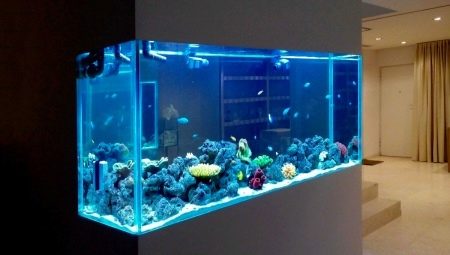The thickness of the glass used to make the aquarium affects its dry weight and, consequently, affects, for example, the design of the cabinet or rack. The thicker the glass, the less their transparency. Often glass when building its thickness gives an increasingly tangible green tint.
Glasses that are too thin may not be strong enough and will crack if their sizes do not match the volume of the aquarium. Well and of course glass thickness is reflected in the price of the finished aquarium. Thick glass is usually more expensive. Is it worth it to overpay for walls that are too thick, if the aquarium is small - consider this article.
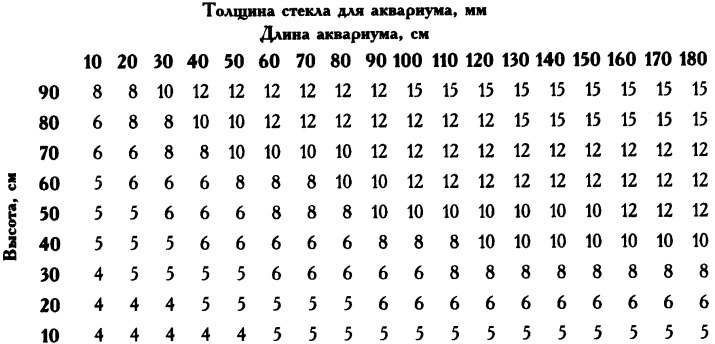
Given the above reasons, the calculation of the thickness is very important. It may seem that the thicker the glass, the better. Especially when it comes to a homemade aquarium.
But even in this case, it is advisable to calculate the thickness, otherwise the aquarium may lose some of its useful internal volume. Do not sacrifice the living space of a reservoir, for the sake of excessive strength.
For frame aquariums, where a metal corner takes over part of the load, the glass thickness may be less, however, in this case it is important not to make a mistake with this characteristic. For frameless constructions, where the strength of the glasses determines all the operational characteristics, their thickness is one of the most important indicators. With large lengths and heights, the front and back walls of such an aquarium experience the greatest stress.
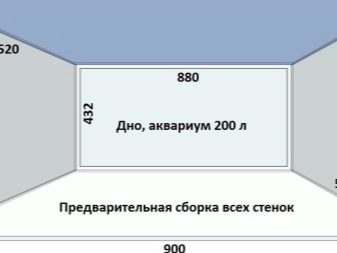
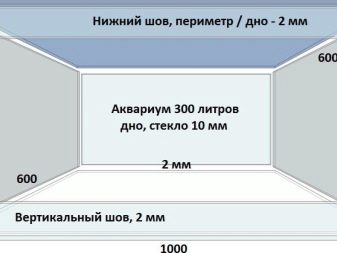
In order to avoid excessive bending, stiffeners were invented. Tanks with a volume of less than 100 liters can do without stiffeners. However, if their length still exceeds 1 m, it will be necessary to strengthen the glass with horizontal strips glued along the front and rear walls - they are called stiffeners.
With even larger sizes of the aquarium, it is necessary to use transverse ties - glass strips glued across the aquarium between the front and rear walls on the stiffeners flat. This allows you to reduce the deflection of the walls and, accordingly, the load on them by about half.
In the manufacture of a glass frameless tank this can lead to a decrease in the thickness of its walls. Additional structural elements are made of the same material as the entire aquarium. These designs can save some on the size of the cover glass, which does not require additional devices for installation, it simply lies on top of the ribs and screeds.
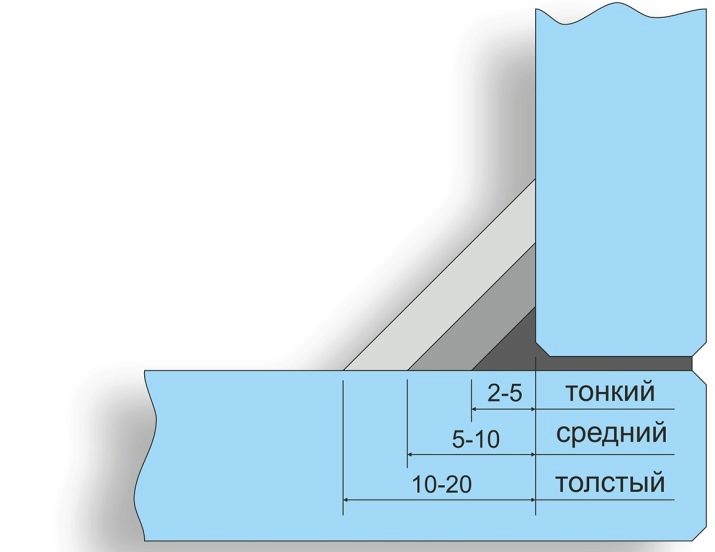
For the manufacture of the bottom of large aquariums of 100 liters or more, the use of double glasses is justified. For strength between the blanks for the bottom, a plastic film is laid.
When making or buying a finished aquarium, the question of choosing the optimal thickness of the glass used for its manufacture is very acute. It can be difficult to independently calculate this value, and errors can be expensive. If the glass is thinner than required, a real catastrophe can happen, the scale of which directly depends on the volume of the aquarium. Flooding of the apartment and the neighbors below can result in a very expensive repair.
If the walls are thicker than required, the artificial pond will turn out to be not only too heavy, but also expensive.
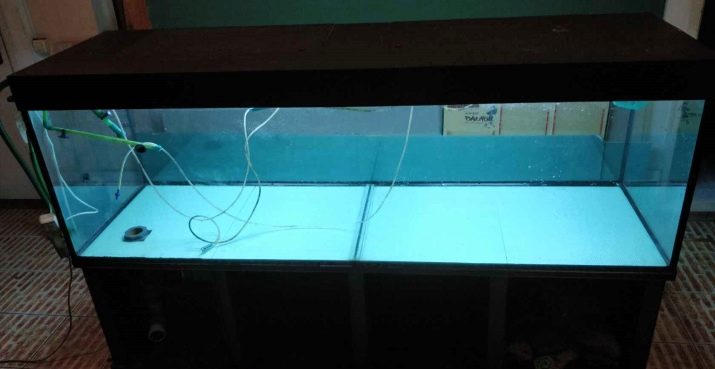
Inventing a bicycle in search of ways to solve the problem, of course, is not worth it. Everything has long been calculated. At the same time, it has been proved by numerous experiments that thickness is the main parameter that determines the fracture strength of glass. Even the so-called tempered glass, which is more difficult to break than usual, can not withstand the deformations that occur when filling a long and high aquarium with water.
The table below allows you to select the required values depending on the parameters of the aquarium.
Recommended thickness of the glass frameless aquarium without stiffeners (mm).
height (cm) | length (cm) | |||||||||
30 | 40 | 50 | 60 | 80 | 100 | 120 | 150 | 200 | 250 | |
30 | 3,5 | 4 | 4,5 | 5 | 5,5 | 6 | 6,5 | 6,5 | 7 | 7 |
40 | - | 5 | 5,5 | 6 | 6,5 | 6 | 8 | 8 | 8,5 | 9 |
50 | - | - | 6,5 | 7 | 7,5 | 8,5 | 9 | 9,5 | 10 | 11 |
60 | - | - | - | 7,5 | 8,5 | 9 | 10 | 11 | 12 | 12 |
The height of the aquarium more than 60 cm is unjustified due to the difficulties of care - not enough arm length.

In an effort to build a large capacity, the aquarist has to limit his desires with available or accessible glasses, the thickness of which will ultimately determine the permissible size of the future reservoir.
However, the metal frame or the use of stiffeners can somewhat reduce the severity of the problem. The following table will help you to see how significant the difference in wall thickness is. From the experience of aquarists, it is known that Finding thinner glass is always easier.

Optimum glass thickness in frame aquariums and all-glass containers with stiffeners (mm).
height (cm) | length (cm) | |||||||||
30 | 40 | 50 | 60 | 80 | 100 | 120 | 150 | 200 | 250 | |
30 | 3,5 | 3,5 | 4 | 4 | 4,5 | 4,5 | 4,5 | 4,5 | 4,5 | 4,5 |
40 | - | 4,5 | 5 | 5 | 5,5 | 6 | 6 | 6 | 6 | 6 |
50 | - | - | 6 | 6 | 7 | 7 | 7,5 | 7,5 | 8 | 8 |
60 | - | - | - | 7 | 8 | 8 | 8,5 | 9 | 9 | 9 |
As can be seen from the table, one of the most important factors determining the thickness of glasses in aquariums with stiffeners or with a metal frame still remains it is their height.
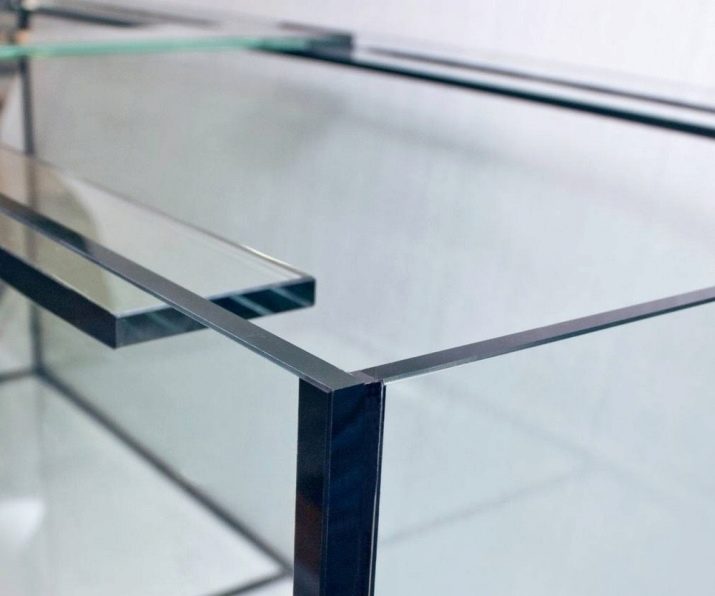
Let's try to give examples of calculating the wall thickness for an aquarium of 200 liters. For this we use the material of the above tables.
With an optimal length of 1.5 meters, a width and a height of 37 cm, the walls in the frameless and ribless version should have a thickness of at least 8 mm. The use of a frame or stiffeners will help reduce the thickness of the glass of a 200-liter aquarium by 2 mm, then it will be 6 mm. Find such a glass is much easier.
To create an aquarium with a volume of 300 liters, thicker glasses will be required.

For an aquarium that does not have a frame and stiffeners, the length of which will be 200 cm with an optimal height of 38 cm, the glass should have a thickness of at least 8.5 cm. Stiffeners or frame will reduce the thickness of the material used by 1.5 mm. And again, it will be possible to dispense with more affordable glasses of 6 mm thickness.
Thus, the use of frames or stiffeners in frameless aquariums makes it possible to use the material that is more commercially available and, accordingly, more accessible.
See below for how to calculate the thickness of glass for an aquarium.
